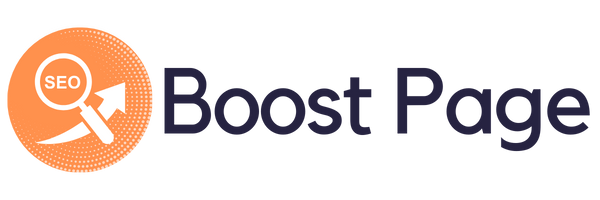
I’ll be honest with you I never thought I’d care much about marketing. Back in school, it just sounded like one of those buzzwords business folks used while drinking coffee in tall glass buildings. But then life hit me. I saw how a single billboard on a busy road could get stuck in your head for days. Or how one ad on Instagram made me buy something I didn’t even need. Funny thing is… both of those are marketing, just different flavors.
That’s what this whole talk is about digital marketing vs. traditional marketing. Two sides of the same coin, both trying to grab your attention (and, let’s be real, your money). But the way they do it? That’s where things get interesting.
The Old School: Traditional Marketing
Let’s start with the classics. Traditional marketing is everything you’ve probably grown up with TV ads, radio jingles, flyers shoved in your mailbox, newspapers with those half-page spreads, and of course, billboards.
I remember as a kid, sitting in the living room, hearing those same TV ads over and over. You didn’t even want the product, but you could hum the jingle without messing up a word. That’s traditional marketing working its magic.
The thing about it is it’s big, broad, and loud. It doesn’t whisper your name. It shouts to the crowd and hopes you’re listening. And for decades, it worked. People bought cars because they saw them on glossy magazine covers. Families picked restaurants because of radio commercials. It was the way to do business.
But here’s the downside it’s expensive. Printing, air time, physical space. Not every small shop can throw money at a TV spot. Plus, it’s hard to measure. Like, you put up a billboard… but did anyone actually buy from you because of it? Who knows.
The New Kid: Digital Marketing
Now fast forward to today. Phones in our hands, Wi-Fi everywhere, TikTok clips looping at 2 a.m. Welcome to the digital battlefield.
Digital marketing is about meeting people where they already are online. That could be social media ads, Google search results, YouTube sponsorships, influencer shoutouts, email newsletters. The list doesn’t end.
Here’s the cool part you can actually track what’s happening. You run an ad, and boom, you see clicks, conversions, impressions. Data everywhere. That’s something traditional marketing could never dream of.
And the cost? Much lower. A small bakery can run a Facebook ad targeting just their neighborhood moms. No need for a city-wide billboard. You can be specific laser focused.
But don’t get too comfortable. Digital marketing has its own mess. Algorithms change faster than moods. What worked last month might be useless today. And let’s not forget the overload ads are everywhere, so people ignore them more and more.
Head-to-Head: Where They Differ
So how do these two giants stack up? Let’s break it down quickly.
- Reach: Traditional is broad (TV, radio). Digital is targeted (specific age, interest, location).
- Cost: Traditional usually costs more upfront. Digital can start small.
- Tracking: Traditional = vague guesses. Digital = charts, graphs, real-time updates.
- Engagement: Traditional is one-way. Digital can be two-way (comments, shares, likes).
But truth be told, it’s not always about which is better. Sometimes, it’s about what fits your situation.
A Little Story
Let me give you an example. A few years back, a friend of mine opened a small gym. He was so hyped bought all the equipment, painted the walls, even set up a protein shake counter. But here’s the thing: no one came.
He printed flyers, pinned them at grocery stores, even paid for a local newspaper ad. The calls? Zero. People just didn’t notice.
Then one day, he made a funny video of himself struggling with a squat bar and posted it on Instagram. It wasn’t even planned marketing it was just him being silly. Guess what? It got shared around. Suddenly, people from the same neighborhood started showing up. They recognized him, they felt connected.
That’s the shift right there. Traditional marketing can plant seeds, but digital often sparks connections in a more personal way.
Where Traditional Still Wins
Now, I don’t want you thinking traditional is dead. It’s not. Far from it.
Big brands still pour millions into Super Bowl ads. Why? Because when half the country is watching the same thing at the same time, you can’t beat that exposure. Billboards still work for local awareness ever noticed how restaurants near highways put up huge signs? Works every time.
And honestly, there’s a trust factor. People see a big glossy ad in Time magazine and think, “This brand must be legit.” There’s a sense of authority that digital sometimes struggles with.
Where Digital Shines Brightest
On the flip side, digital marketing gives power back to the little guy. You don’t need a million-dollar budget. Just some creativity, consistency, and a decent understanding of the platforms.
Think about influencers half of them started in their bedrooms making random videos. Now brands pay them thousands because their audience actually listens. That’s the magic of digital it feels personal, direct, and current.
Plus, it lets you adapt fast. You notice your ad isn’t working? Change it today. Try a new design. A new headline. Traditional doesn’t give you that flexibility.
Blended Strategy: Why Not Both?
Here’s a wild thought what if we stop treating them like enemies? What if digital and traditional could actually work together?
Picture this: a brand launches a product with a big TV ad (traditional) and then continues the conversation online with hashtags, challenges, and behind-the-scenes videos (digital). Suddenly, people don’t just see the ad; they engage with it.
That’s what a lot of smart companies are doing using both worlds to their advantage.
A Quick Imperfect List (because life’s messy)
When should you go traditional?
- When you want to build long-term brand authority.
- When reaching a mass audience all at once.
- When credibility matters more than clicks.
When should you lean digital?
- When budgets are tight.
- When you want data to guide decisions.
- When you’re aiming for quick, interactive engagement.
But honestly, sometimes you won’t know until you try.
The Emotional Side of Marketing
Now here’s something people forget: marketing isn’t just numbers and reach. It’s emotions.
Traditional marketing makes you feel part of something bigger like everyone’s watching that same Coca-Cola Christmas ad. It’s shared culture.
Digital marketing, though, feels more intimate. It’s like a friend sliding into your DMs with a product recommendation. Both tap into emotions, just in different ways.
And that’s why it’s not about picking one side forever. It’s about knowing when you want that broad cultural impact, and when you need that close, personal nudge.
A Messy Truth
You might laugh, but here’s the truth: no matter how advanced marketing gets, people will always find ways to ignore it. Ad blockers, skipping commercials, scrolling past. That’s human nature.
So maybe the real strategy isn’t just choosing digital or traditional. Maybe it’s about creating something that actually matters. A story people care about. A brand that doesn’t feel like a stranger knocking on your door, but more like a neighbor you trust.
Quick Comparison Table
Here’s a simple way to see the difference at a glance (not polished, just straight to the point):
| Factor | Traditional Marketing | Digital Marketing |
| Reach | Broad, mass audience (TV, radio, billboards) | Targeted, specific demographics & interests |
| Cost | Usually high upfront (printing, air time) | Can start small, scalable by budget |
| Tracking | Hard to measure, vague guesses | Detailed analytics, real-time updates |
| Engagement | One-way communication | Two-way (likes, shares, comments) |
| Speed/Flexibility | Slow to change, fixed once launched | Can be updated anytime |
| Trust Factor | Often seen as more “established” | Can feel casual, personal, but less formal |
Frequently Asked Questions
1. Is traditional marketing dead?
Nope, not at all. It’s just not the only game in town anymore. Traditional still works for credibility, big events, and mass awareness. Think Super Bowl ads they’re not going anywhere.
2. Which one is cheaper: digital or traditional?
Usually digital, because you can run small, targeted ads without breaking the bank. Traditional campaigns often need huge budgets (printing, TV slots, etc.).
3. Can small businesses use traditional marketing effectively?
Yes, but carefully. A local bakery might benefit from flyers or a billboard near town, but if money’s tight, digital usually gives a better return.
4. Which one builds trust faster?
Traditional often looks more serious (magazine ads, TV spots). Digital can build trust too, but usually through consistency showing up online, engaging, being real.
Should I choose one or mix both?
Honestly? If you can, mix both. Use traditional to create broad awareness and digital to keep conversations going. They can complement each other instead of competing.
What’s the biggest risk with digital marketing?
Algorithms. They change constantly, so what works today might flop tomorrow. Also, digital space is noisy harder to stand out.
What’s the biggest risk with traditional marketing?
Spending big money without knowing if it’s working. You can’t really track “impressions” on a billboard the way you can online.
Final Reflection
I’ll wrap this up, though not neatly because life rarely ties up with a bow.
Digital marketing vs. traditional marketing it’s not a boxing match with a clear winner. It’s more like… choosing shoes. Sometimes you need sneakers, sometimes formal shoes. Depends on where you’re going.
What I’ve learned is this: people don’t buy because you shouted the loudest or because your Instagram ad had the best graphics. They buy when something clicks when they feel seen, understood, maybe even entertained.
And at the end of the day, that’s what matters. Not whether it was a billboard or a TikTok ad. But whether you walked away knowing you reached someone in a way that won’t make you cringe ten years from now.
Because when you’re older, you won’t remember the click-through rates or the ad spend. You’ll remember the connections. The stories. The little moments where your work actually touched someone.
And honestly? That’s the only strategy worth chasing.





